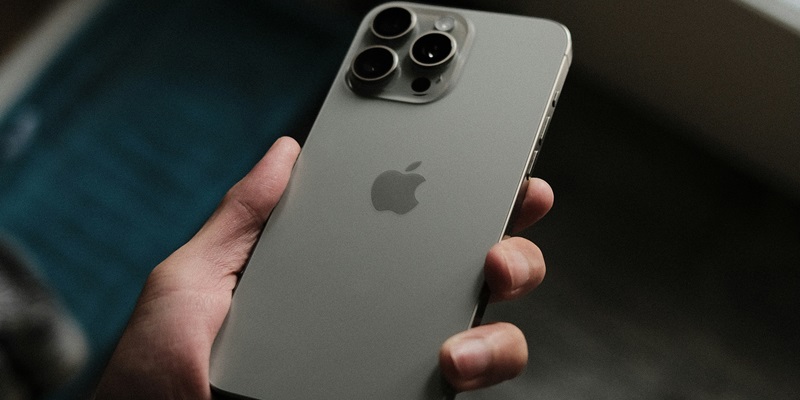The prospect of Taptic buttons on the iPhone 15 Pro Max generated significant excitement among enthusiasts and tech analysts. Engineered to replace traditional mechanical buttons with pressure-sensitive touch points that offer haptic feedback, these buttons were to represent a leap forward in the user experience. However, their introduction has been postponed due to technical challenges, shifting their expected debut to future iPhone models. This article delves into the innovative concept behind Taptic buttons, the hurdles encountered in their implementation, the insights gained from prototype analysis, and the potential future of this fascinating technology.
The Innovative Vision Behind Taptic Buttons
Taptic buttons were envisioned to revolutionize how users interact with their iPhones. Designed to replace mechanical buttons with touch-responsive surfaces that provide haptic feedback through vibrations, these buttons aimed to create the sensation of a physical button press while being entirely digital. Users would feel deliberate, pressure-sensitive feedback, enhancing the tactile experience significantly. By integrating haptic technology, Apple intended not only to modernize the physical interface but also to open new avenues for varied functionalities based on pressure sensitivity.
These futuristic buttons were expected to enable users to perform different actions based on the pressure applied. For instance, light and hard presses could trigger distinct functionalities, introducing a versatile approach to user interaction. This forward-thinking initiative highlighted Apple’s intent to continually push technological boundaries and craft more intuitive and multifaceted user interfaces. As part of its ongoing endeavor to innovate, Apple aimed to ensure a harmonious blend of tactile realism and digital precision, thereby evolving the user experience to new heights.
Technical Complications Leading to Delay
Despite the promising prospects, the development of Taptic buttons was fraught with technical difficulties. Engineering complexities, reliability issues, and manufacturing challenges all played a part in hindering their timely integration into the iPhone 15 Pro Max. These obstacles ultimately led to the critical decision to postpone their launch. The deferment stemmed from the need to ensure a seamless and faultless user experience, a hallmark of Apple’s product philosophy. Rather than compromising on quality, Apple opted to refine the technology further.
Such a crucial decision underscored Apple’s dedication to rigorously testing and perfecting new features before they reach consumers, preserving the company’s reputation for high-quality, reliable products. By delaying the introduction of Taptic buttons, Apple demonstrated a strategic patience, recognizing that premature deployment could undermine user trust and satisfaction. This approach, while disappointing to eager consumers, reaffirmed Apple’s commitment to delivering technologically advanced yet impeccable devices, ensuring that each innovation meets the highest standards of reliability and functionality.
Exploring the EVT Prototype of iPhone 15 Pro Max
A deeper understanding of the intended design and functionality of Taptic buttons can be gleaned from the Engineering Validation Test (EVT) prototype of the iPhone 15 Pro Max. This prototype revealed two significant changes in button design compared to the final product. The Action button, reimagined to be larger and more rounded, hinted at an ergonomic and functional enhancement geared towards improved usability. Additionally, the volume buttons were consolidated into a single rocker-style design.
This consolidation was reminiscent of the first-generation iPhone’s layout, suggesting a return to a simpler, more streamlined button arrangement. Both changes underscored the potential for Taptic buttons to not only modernize but also simplify the hardware design, maintaining elegance with enhanced functionality. The EVT prototype provided a glimpse into Apple’s meticulous design process, showcasing how the company balanced futuristic innovation with practical user considerations. These design adjustments exemplify Apple’s nuanced approach to creating user-friendly, aesthetically pleasing devices.
Functional Insights and Unique Feedback Mechanisms
The evaluation of the EVT prototype highlighted distinct behavioral characteristics of the Taptic buttons. Upon pressing, the Taptic buttons exhibited slight movement, a departure from the fixed Home button seen in earlier models like the iPhone 7. However, the actual feedback was generated entirely through vibration and sound, meticulously crafted to mimic the sensation of pressing a mechanical button. This innovative feedback system was consistent whether the device was powered on or off, ensuring a cohesive user experience under various conditions.
Such consistency is vital for user satisfaction, as it provides a familiar tactile response despite the lack of physical button mechanisms. The sophisticated haptic feedback holds substantial promise for enhancing future digital interfaces, potentially distinguishing Apple devices in an increasingly competitive market. By meticulously engineering the sensation of button presses, Apple aimed to bridge the gap between physical and digital interactions, offering users a tactilely engaging yet seamlessly digital experience.
Future Prospects for Taptic Technology
The anticipation surrounding Taptic buttons on the iPhone 15 Pro Max has sparked considerable excitement among tech enthusiasts and analysts. These buttons, designed to replace traditional mechanical buttons with pressure-sensitive touch points offering haptic feedback, were expected to revolutionize the user experience by providing a more intuitive and responsive interface. However, technical challenges have delayed their introduction, pushing their anticipated release to future iPhone models. This development has led to a closer examination of the innovative Taptic button concept, the obstacles faced during their implementation, the valuable insights gleaned from prototype testing, and the potential this cutting-edge technology holds for future iterations. By replacing mechanical parts with touch-sensitive areas, Apple aimed to enhance the phone’s durability and streamline its design. Despite the delays, the fascination with Taptic buttons persists, as they promise to integrate seamlessly with the advancing trend of more immersive and user-friendly smartphone interfaces. The story of Taptic buttons underscores the ongoing innovation in the tech world, even when roadblocks temporarily stall progress.

